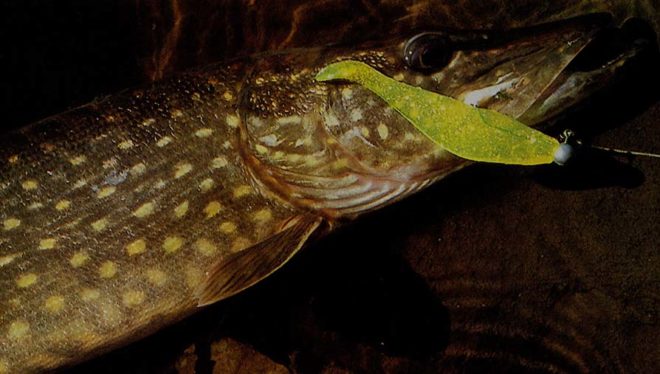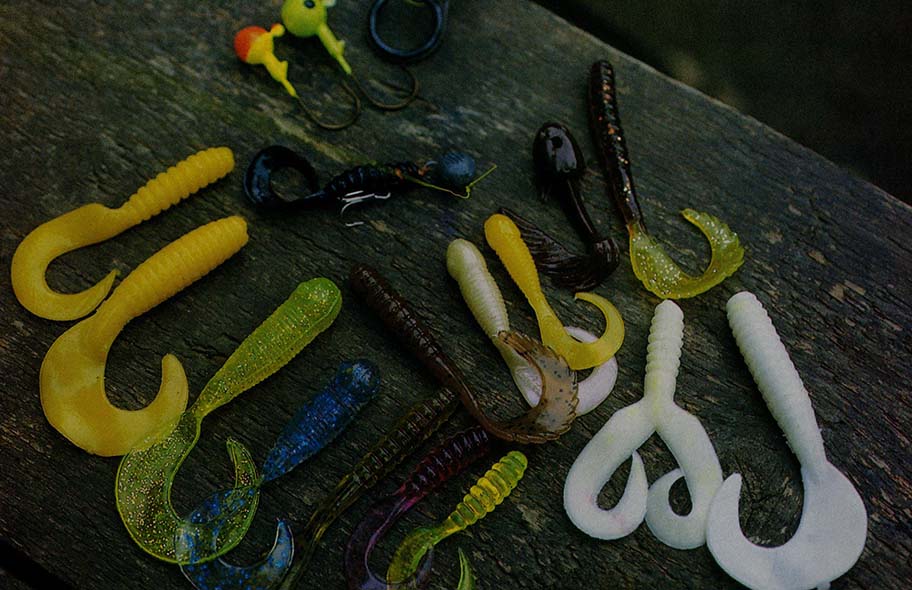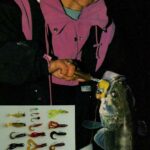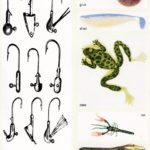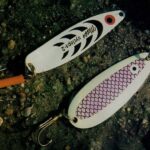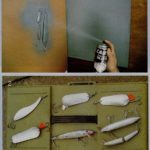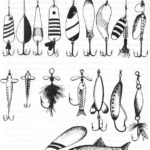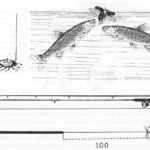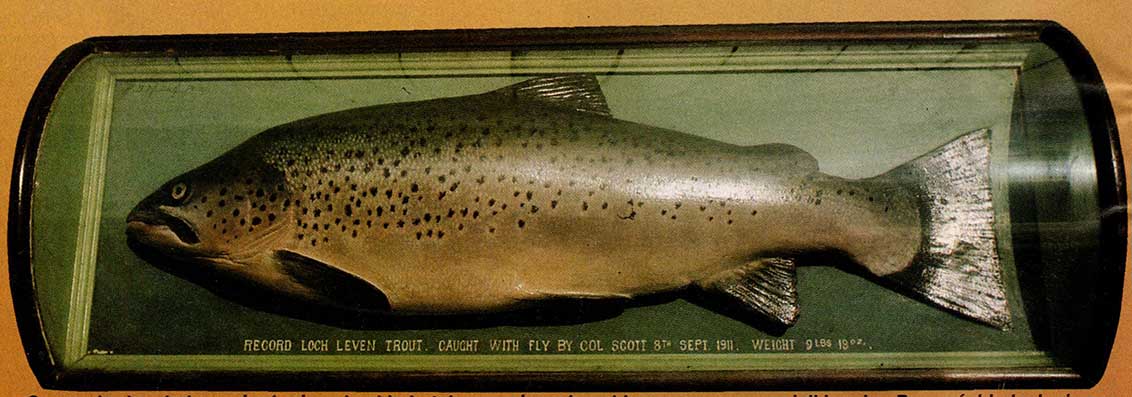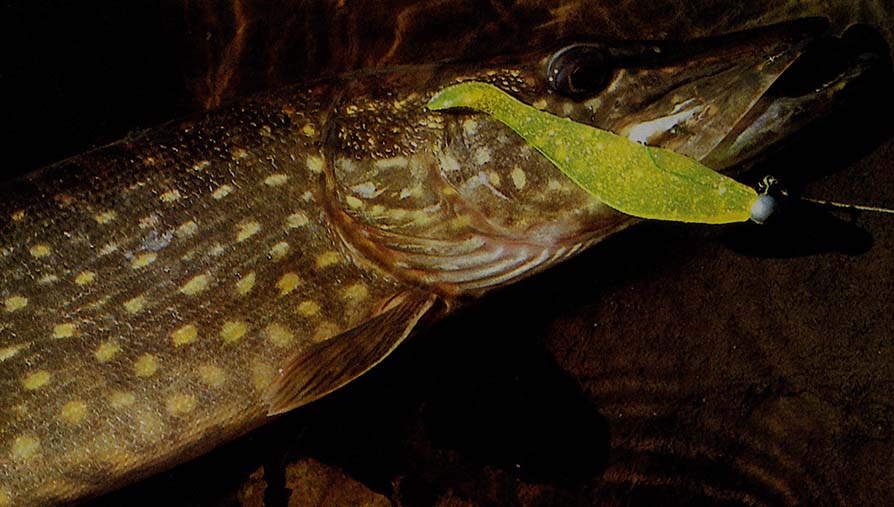 Przynęty z miękkiego tworzywa sztucznego są przebojem ostatnich lat. I chociaż w ich ojczyźnie, Stanach Zjednoczonych, produkuje się je z myślą o łowieniu innych gatunków ryb, kolorowe gumki dość szybko opanowały europejski rynek wędkarski. Olivier Portrat omawia poszczególne rodzaje tych przynęt.
Przynęty z miękkiego tworzywa sztucznego są przebojem ostatnich lat. I chociaż w ich ojczyźnie, Stanach Zjednoczonych, produkuje się je z myślą o łowieniu innych gatunków ryb, kolorowe gumki dość szybko opanowały europejski rynek wędkarski. Olivier Portrat omawia poszczególne rodzaje tych przynęt.
Wybór przynęt sztucznych z miękkiego tworzywa sztucznego jest dziś tak wielki, że nie ma już chyba wędkarza amatora, który potrafiłby się w tym wszystkim połapać. Nie dość, że po wejściu do sklepu można dostać oczopląsu, to jeszcze co miesiąc pojawiają się kolejne nowości, całkowicie zwariowane modele gumek. Prawda jest bowiem taka, że europejski rynek „trzęsących się przynęt” coraz bardziej upodabnia się do rynku amerykańskiego. W Europie tylko nieliczne firmy produkują przynęty sztuczne z miękkiego tworzywa sztucznego. Wielu importerów natomiast zapomina o tym, że oferowane na rynku amerykańskim gumki wykonuje się z myślą o tamtejszych wodach oraz gatunkach ryb. Przykładowo
to, co jest dobre na amerykańskie sandacze (walleyes) wcale nie musi od razu być rewelacyjnie skuteczne na europejskie sandacze.
Cztery grupy
Nagle może się okazać, że w olbrzymiej ofercie handlowej tylko kilka modeli gumek nadaje się do łowienia naszych drapieżników. Ważne jest więc, aby choć trochę orientować się w otaczającym nas „gąszczu” przynęt z miękkiego tworzywa sztucznego. Większość gumek można podzielić na cztery duże grupy. Są to: 1. klasyczne twistery, 2. imitacje ryb (shads i vitalas), 3. imitacje dżdżownic, jaszczurek i traszek oraz 4. przynęty egzotyczne, do których między innymi zaliczają się pływające imitacje ślimaków pomrowów, żab i tak modne ostatnio gumki flying lures. Wszytkie te grupy są oczywiście łowne także w Europie, pod warunkiem jednak, że wędkarz będzie dokładnie wiedział gdzie oraz jak łowić na poszczególne modele tych przynęt.
W naszych szerokościach geograficznych twister z pojedynczym ogonkiem dość szybko awansował do grona klasyków i jest w ogóle jedną z bardziej ulubionych przynęt sztucznych. Trochę to dziwi, gdyż w USA przynęta ta wcale nie cieszy się zbytnią popularnością. Mało tego – wielu uznanych amerykańskich wędkarzy w ogóle nie łowi na „normalne” twistery!
Co kraj to obyczaj? Ależ skąd! Amerykanie doskonale wiedzą, jaka przynęta najbardziej „odpowiada” danemu gatunkowi ryb, które zamierzają akurat łowić. A przecież za oceanem „curl tail” (wijący się ogonek – przyp. tłum.) wymyślono pierwotnie do łowienia dorastających do niewielkich rozmiarów drapieżników z rodziny bassów słonecznych. Do łowienia walleye (amerykańskich sandaczy) tamtejsi wędkarze używają twisterów sporadycznie.
Czy przynęta na bassy słoneczne ma więc jakąś rację bytu w Europie? Na sandacze i okonie rzeczne – jak najbardziej! Praktyka już od dawna bowiem dowodzi, że sygnały wysyłane przez pracującego twistera jak najbardziej „pasują” do naszych wód oraz zamieszkujących je ryb. Tym samym mister twister stał się prawdziwym Europejczykiem.
2. IMITACJE RYB
W USA równie „niepopularne” jak twistery są także gumowe imitacje ryb. Shads’y spotyka się w sklepach jedynie okazjonalnie. Ze względu na swój charakterystyczny ogonek przynęta ta nazywana jest też niekiedy twisterem łopatkowym.
W USA najmniejsze modele rybek z miękkiego tworzywa sztucznego cieszą się uznaniem jedynie wędkarzy łowiących bassy słoneczne oraz walleye.
Większe modele o długości ponad 5 cm są kupowane tylko przez kolegów łowiących w morzu. Gumowe rybki są przeważnie imitacją aloz, ryb masowo występujących zarówno w wodzie słodkiej, słonej i słono-słodkiej, stanowiących główny pokarm tamtejszych drapieżników.
Gumowe imitacje ryb z ogonkami w kształcie łopatki także nie zdobyły zbyt dużej popularności w Ameryce.
W przypadku walleyes jest to dość zrozumiałe – ryby te osiągają dwa razy mniejsze rozmiary niż sandacze europejskie, a tym samym łowienie ich nie jest aż tak atrakcyjne i tylko nieliczni wędkarze nastawiają się na łowienie akurat tych drapieżników. Dziwi natomiast fakt, że przynęty te są tak rzadko używane do łowienia muskie oraz amerykańskich szczupaków (takich samych Esox lucius jak u nas). W Stanach Zjednoczonych drapieżnikom tym nikt jeszcze tak naprawdę nie dobrał się nigdy do skóry.
Pod tym względem amerykańscy wędkarze mogliby się wiele nauczyć od swoich europejskich kolegów. Z tej strony oceanu już od dawna wiadomo, że największe rozmiary shads są „zabójczą” przynętą na szczupaki. Przynęta ta jest szczególnie skuteczna, gdy łowi się na nią bez ołowianej główki i pozwala się jej tańczyć w toni wody.
Inna gumowa rybka o dźwięcznej nazwie vitala wywodzi się nie z USA, lecz z Francji. Przynęta ta w odróżnieniu od klasycznych ripperów wygina się na boki na całej długości swego korpusu.
Ta niewątpliwa zaleta jest także największą wadą tej przynęty – poprawne uzbrojenie oraz dalekie rzuty giętką vitalą nie należą do najłatwiejszych.
